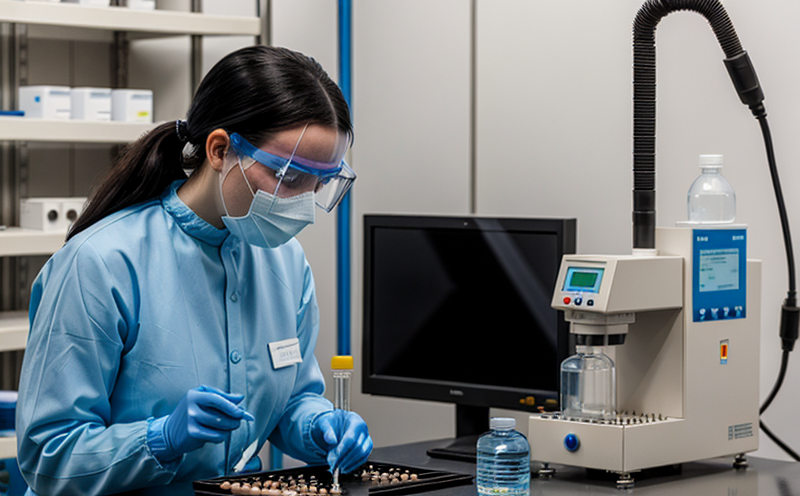High Resolution Mass Spectrometry Accurate Mass Testing
In the pharmaceutical sector, chemical characterization and impurity profiling are critical steps in ensuring drug product quality and safety. High-resolution mass spectrometry (HRMS) accurate mass testing is a cornerstone of this process. It allows for precise determination of molecular formulas, thereby facilitating identification of known compounds as well as potential impurities.
The technology leverages advanced ionization techniques such as electrospray or matrix-assisted laser desorption/ionization to generate highly accurate mass-to-charge (m/z) ratios. These accurate m/z values enable researchers and quality assurance teams to distinguish between structurally similar molecules with confidence, which is particularly important in complex mixtures like those found in pharmaceutical formulations.
The use of HRMS provides several advantages over lower resolution methods. Not only does it offer unparalleled precision in determining molecular weights, but it also allows for the detection of low-abundance impurities that might otherwise go unnoticed by less sensitive techniques. This capability is essential for meeting stringent regulatory requirements imposed by organizations such as the FDA and EMA.
For accurate mass testing to be effective, proper sample preparation is crucial. Samples must be dissolved in appropriate solvents before introduction into the instrument. Careful selection of solvent systems helps minimize matrix effects which could distort measurements. Additionally, derivatization may sometimes be necessary depending on the nature of the analytes being analyzed.
Once prepared, samples are introduced into the mass spectrometer where they undergo ionization followed by separation based on their m/z values. Data acquisition involves recording intensity versus m/z ratio information which is then processed using specialized software packages designed for analyzing complex spectra.
The resulting data can be used not only to confirm the presence or absence of specific compounds but also to infer structural information about them through techniques like fragmentation studies. This comprehensive approach ensures complete characterization of both active pharmaceutical ingredients (APIs) and excipients present in a formulation.
Regulatory compliance plays a significant role in selecting suitable analytical methods for drug development. HRMS accurate mass testing aligns well with current Good Manufacturing Practices (cGMP), ensuring that all steps involved in manufacturing processes are controlled, documented, and validated to meet predefined quality standards.
Applied Standards
| Affiliated Standard | Description |
|---|---|
| ISO/IEC 17025:2017 | Laboratory accreditation standard ensuring competence and consistency. |
| ASTM E896-17 | Guideline for sample preparation in pharmaceutical analysis. |
| IPEC Guidance on Analytical Method Validation | Framework for validating analytical methods used in drug development and manufacturing. |
| Ph. Eur. 2.9.17 (Impurities) | European Pharmacopoeia chapter detailing requirements for impurity testing. |
Quality and Reliability Assurance
At our laboratory, we maintain strict adherence to international standards like ISO/IEC 17025:2017 which ensures that every aspect of our operations—from personnel training to equipment calibration—is conducted at the highest level of proficiency. Our robust quality management system integrates continuous improvement practices aimed at reducing variability in results and enhancing overall reliability.
We employ rigorous validation protocols for all analytical methods employed, including those based on HRMS accurate mass testing. These validations encompass method linearity, precision, accuracy, detection limits, quantitation capabilities, and specificity. By doing so, we guarantee that the data generated is reliable enough to support critical decisions regarding product quality.
Furthermore, our state-of-the-art instrumentation paired with experienced analytical chemists ensures consistent performance across multiple batches of samples. Regular instrument maintenance schedules coupled with internal audits help monitor equipment condition and identify any potential issues early on before they impact test results.
Environmental and Sustainability Contributions
- Reduced waste generation through efficient sample preparation techniques.
- Eco-friendly solvent selection minimizing environmental footprint during analysis.
- Energy-efficient laboratory design contributing to lower carbon emissions.
- Recycling programs for used reagents and other consumables promoting resource conservation.





